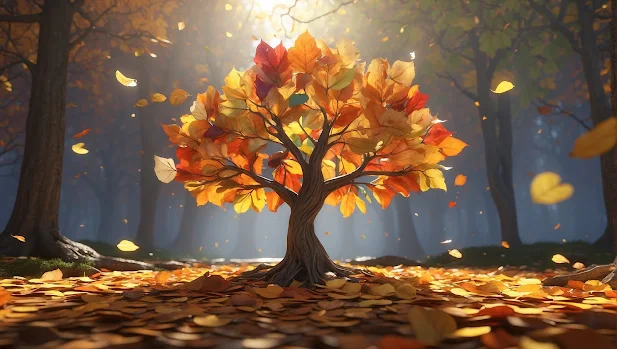Leaves dropping or shedding is a natural process in a plant's lifecycle. It might cause concern, but understanding the reasons behind it helps in proper plant care.
Natural Causes of Leaf Dropping
Several factors contribute to leaf dropping, including plant species, age, and growth patterns. Some plants shed leaves regularly as part of their natural growth cycle.
Seasonal Influence on Leaf Dropping
Seasonal changes, particularly in autumn or fall, trigger deciduous trees and some plants to shed leaves as a preparation for the winter season.
Environmental Stress and Leaf Shedding
Environmental stressors like extreme temperatures, drought, or excessive moisture can prompt leaves to drop as a survival mechanism by the plant.
Plant Health and Leaf Dropping
Healthy plants tend to retain leaves, whereas stressed or diseased plants might drop leaves as a response to conserve resources.
Diseases and Pests Leading to Leaf Drop
Diseases such as fungal infections or pest infestations can cause leaf dropping as plants react to fight off the invaders.
Nutrient Deficiencies and Leaf Shedding
Lack of essential nutrients, particularly nitrogen, potassium, or magnesium, can lead to leaf discoloration and eventual shedding.
Signs and Symptoms of Normal Leaf Shedding
Recognizing normal leaf shedding helps distinguish it from abnormal leaf dropping caused by stress or diseases.
Preventive Measures for Excessive Leaf Dropping
Maintaining optimal growing conditions, providing proper care, and regular inspections help prevent unnecessary leaf dropping.
Managing Leaf Drop in Different Plant Species
Different plants have varying leaf-shedding patterns; understanding these patterns aids in effective management.
Effects of Leaf Dropping on Plants
Leaf dropping can be a natural process that allows plants to conserve energy or a response to stress, impacting their growth.
Impacts of Leaf Dropping on the Ecosystem
The decomposition of fallen leaves contributes to the ecosystem's nutrient cycle, enriching the soil and supporting other organisms.
Conclusion
Understanding the reasons behind leaf dropping is crucial in proper plant care and management. While it can be a natural process, it could also indicate underlying issues that need attention.
FAQs
1. Is it normal for plants to shed leaves?
Yes, many plants naturally shed leaves as part of their growth cycle.
2. How can I differentiate between normal leaf dropping and an issue?
Normal leaf dropping is gradual and occurs during specific seasons, while abnormal shedding might be sudden and extensive.
3. Can environmental factors cause excessive leaf dropping?
Yes, extreme temperatures, drought, or excessive moisture can stress plants and lead to leaf shedding.
4. What can I do to prevent excessive leaf dropping in my plants?
Maintain proper watering, ensure adequate nutrients, and provide optimal growing conditions.
5. Do fallen leaves benefit the soil?
Yes, fallen leaves decompose and enrich the soil, contributing nutrients for plant growth.

